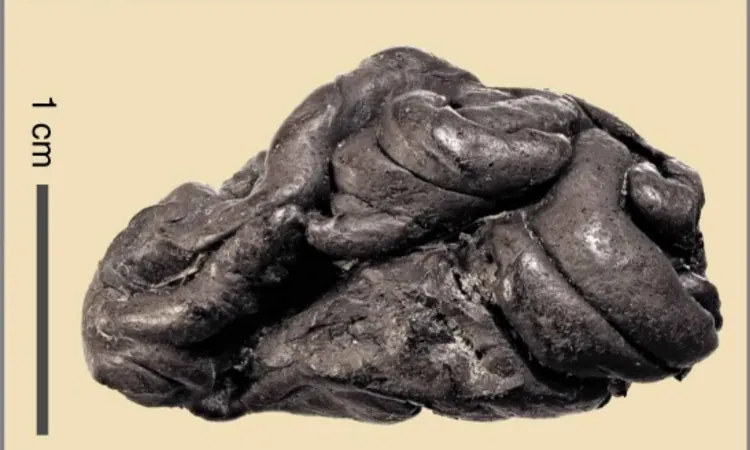
Ancient Chewing Gum Unveils DNA Secrets of a 5,700-Year-Old Woman
2025-09-11
Author: Jia
A Remarkable Discovery on Lolland Island
A tiny piece of chewed birch pitch unearthed on Lolland Island has turned into a time capsule of prehistoric life, revealing astonishing details about an ancient woman. This remarkable find includes her DNA, oral microbes, and remnants of what she ate—all preserved in a single chew mark-studded lump.
Unlocking the Past Through Modern Science
Dating back approximately 5,700 years, during the dawn of farming in Southern Scandinavia, this ancient gum provides an unprecedented glimpse into human activity at a site devoid of any skeletons. The groundbreaking research led by Theis Z. T. Jensen from the Globe Institute at the University of Copenhagen successfully reconstructed a complete ancient human genome from the gum, pinpointing its age using radiocarbon methods.
Chewed Birch Pitch: More Than Just a Snack
The study confirmed the substance as birch pitch, commonly used in tool-making for its pliability when chewed. This resin likely had additional properties, such as mild antiseptic effects, making it a beneficial option for maintaining oral hygiene.
Unraveling Her Genetic Blueprint
The scientists orchestrated a stunning DNA sequencing effort, yielding around 390 million reads. Notably, about one-third lined up perfectly with the human reference genome, enabling researchers to create a detailed mitochondrial DNA profile belonging to the K1e lineage, prevalent among prehistoric Europeans. "This discovery highlights the potential of chewed birch pitch as a valuable source of ancient DNA," remarked Jensen.
Spotlight on Her Appearance and Lifestyle
Analysis revealed that this prehistoric woman had dark skin, dark brown hair, and striking blue eyes, traits inferred from advanced DNA prediction systems. Intriguingly, she likely would have been lactose intolerant, indicative of the era before dairy tolerance became common in Europe.
Her Place in the Human Story
Genetic comparisons indicated she belonged to a population of Western hunter-gatherers, with no significant genetic contributions from eastern groups or local farmers. This suggests that, despite technological advancements in tools and pottery, some communities retained a primarily hunter-gatherer genetic makeup.
A Window into Prehistoric Microbiomes
In addition to human DNA, the birch pitch also held remnants of oral microbes, revealing a complex oral microbiome. This included bacteria associated with periodontal disease, indicating that conditions leading to gum disease existed even in ancient times.
The Woman's Last Meal
Plant and animal DNA found within the pitch disclosed that she likely enjoyed hazelnuts and mallards as part of her diet—common staples among Mesolithic and early Neolithic people.
Chewing Through Time: The Future of Ancient DNA Studies
This fascinating find challenges conventions in archaeological science, presenting chewed resin as a viable alternative for gathering information where bones are missing. Such studies, including ongoing research, are poised to expand our understanding of diet, health, and daily life in prehistoric times. The revelations from this ancient gum are just the beginning.
Published Research
This groundbreaking study has been published in Nature Communications, paving the way for more discoveries in the realm of ancient DNA.


 Brasil (PT)
Brasil (PT)
 Canada (EN)
Canada (EN)
 Chile (ES)
Chile (ES)
 Česko (CS)
Česko (CS)
 대한민국 (KO)
대한민국 (KO)
 España (ES)
España (ES)
 France (FR)
France (FR)
 Hong Kong (EN)
Hong Kong (EN)
 Italia (IT)
Italia (IT)
 日本 (JA)
日本 (JA)
 Magyarország (HU)
Magyarország (HU)
 Norge (NO)
Norge (NO)
 Polska (PL)
Polska (PL)
 Schweiz (DE)
Schweiz (DE)
 Singapore (EN)
Singapore (EN)
 Sverige (SV)
Sverige (SV)
 Suomi (FI)
Suomi (FI)
 Türkiye (TR)
Türkiye (TR)
 الإمارات العربية المتحدة (AR)
الإمارات العربية المتحدة (AR)